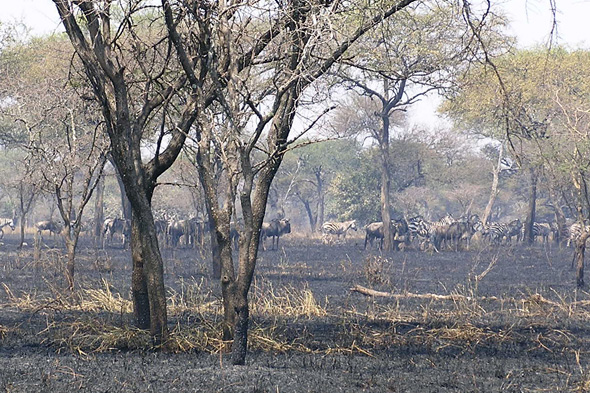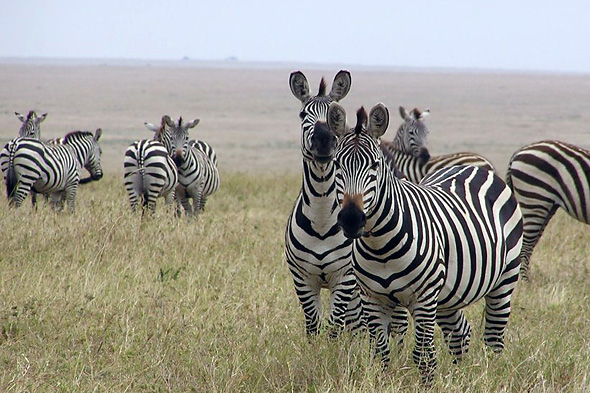
A Burning Interest in the Serengeti
• Click the thumbnails above to view the slide show
These photographs of Tanzania’s Serengeti National Park illustrate research by biologist Stephanie
Eby ’02 that explains how the park’s large mammals, especially herbivores, are affected by fires intentionally
set by park management.
Eby, who did the research for her Ph.D. dissertation at Syracuse Univ., explains that fires are set to
ensure that grasslands do not become moribund and to lower the risk that fires from outside the park
will spread into the park and destroy large areas. Each year, intentional fires burn a third of the park.
Some species are attracted to burned areas following a fire.
Far from harming herbivores, Eby has documented that some species — such as Thomson’s gazelles,
Grant’s gazelles, wildebeest, impala, and warthog — are actually attracted to burned areas for about six
months following a fire.
As she began her research, Eby postulated five possible reasons for this attraction: Herbivores could
be seeking nutrient-rich, post-burn plants; eating ash as a nutrient supplement; avoiding parasites and
predators; or utilizing the warmer microclimate.
Her research uncovered two primary reasons. “First, the herbivores are attracted to the newer, more
nutritious plant growth that sprouts after burning,” Eby explains. “Second, the fires decrease vegetation
height, making it harder for carnivores to sneak up on the herbivores. Ash may also play a minor role
shortly after burning as it is higher in nutrients than unburned vegetation.”






